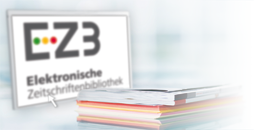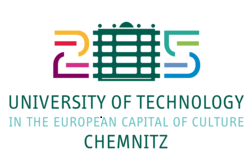Multilingualism in the Canadian Educational Context: Identity, Belonging, and Translanguaging Pedagogies
DOI:
https://doi.org/10.71514/jssal/2025.155Keywords:
multilingual learners, translanguaging, monolingual ideologies, multiple case studyAbstract
In this study, I examine the nature of multilingual education, which provides cultural, social, and economic affordances yet poses considerable emotional and academic challenges for learners. I explore how dominant languages impact multilingual learners’ identity and sense of belonging and identity negotiation, particularly within the Canadian educational context. Through a multiple case study involving four Iranian-Canadian minors and their parents, I use multimodal data collection methods, including semi-structured interviews with children and their parents, children’s writings, and multisemiotic representations, to capture the complexities of learners’ communicative repertoires. Participants’ narratives revealed tensions between their multilingual identities and the monolingual ideologies entrenched in educational systems. However, the study reveals that translanguaging pedagogy, which has emerged as a crucial pedagogical strategy, can enable learners to draw on their unitary communication competence without suppressing part of their linguistic repertoire to enhance understanding and reduce cognitive pressures. This research signals the imperative to operationalise translanguaging as a classroom practice. Dialogic tasks and teacher mediation that affirm multilingual expression can be embedded into everyday instructions. These findings illuminate the imperative for educational reform policies that go beyond classroom practices to address the broader monolingual and neoliberal ideologies, which prioritise the dominant state languages as pathways to prosperity. I argue that such reforms must not be tokenistic and must meaningfully engage with the sociocognitive and cultural challenges multilingual learners face to ensure that their diverse linguistic needs are fully supported.
Downloads
References
Anderson, B. (2016).Imagined communities: Reflections on the origin and spread of nationalism (Rev. ed.). Verso.
Andleeb, N., Asgher, M., & Zimi, R. (2023). Exploration of speaking multiple languages’ effect on cognitive flexibility and problem-solving skills. Pakistan Journal of Humanities and Social Sciences, 11(2), 1–10. https://doi.org/10.52131/pjhss.2023.1102.0394
Årman, H. (2023). Linguistic diversity in education – Language policy and youth agency. In B. A. Svendsen & R. Jonsson (Eds.), The Routledge Handbook of Language and Youth Culture (pp. 179–190). Routledge.
Bristowe, A., Oostendorp, M., & Anthonissen, C. (2014). Language and youth identity in a multilingual setting: A multimodal repertoire approach. Southern African Linguistics and Applied Language Studies, 32, 229–245. https://doi.org/10.2989/16073614.2014.992644
Clandinin, D. J. (2022). Engaging in narrative inquiry (2nd ed.). Routledge. https://doi.org/10.4324/9781003240143
Clark, A. (2004). The Mosaic approach and research with young children. In V. Lewis, M. Kellett, C. Robinson, S. Fraser, & S. Ding (Eds.), The reality of research with children and young people (pp. 142–161). SAGE. http://www.uk.sagepub.com/booksProdDesc.nav?prodId=Book226261
Clark, A., & Moss, P. (2017). Listening to young children: A guide to understanding and using the Mosaic approach (Expanded 3rd ed.). Jessica Kingsley Publishers.
Cohen, L., Manion, L., & Morrison, K. (2018). Research methods in education (8th ed.). Routledge. https://doi.org/10.4324/9781315456539
Creswell, J. W., & Creswell, J. D. (2018). Research design: Qualitative, quantitative, and mixed methods approaches (5th ed.). SAGE.
Cummins, J. (2000). Language, power and pedagogy: Bilingual children in the crossfire. Multilingual Matters.
Cummins, J. (2014). Rethinking pedagogical assumptions in Canadian French immersion programs. Journal of Immersion and Content-Based Language Education, 2(1), 3–22. https://doi.org/10.1075/jicb.2.1.01cum
Darvin, R., & Norton, B. (2015). Identity and a model of investment in applied linguistics. Annual Review of Applied Linguistics, 35, 36–56 https://doi.org/10.1017/S0267190514000191
Diaconu, L. (2021). The benefits of multilingualism in education. In 30 years of economic reforms in the Republic of Moldova: Economic progress via innovation and competitiveness (Vol. II, pp. 160–168). https://doi.org/10.53486/9789975155649.24
Duarte, J. (2020). Translanguaging in the context of mainstream multilingual education. International Journal of Multilingualism, 17(2), 232–247. https://doi.org/10.1080/14790718.2018.1512607
Forbes, K., & Rutgers, D. (2021). Multilingual identity in education. The Language Learning Journal, 49, 399–403. https://doi.org/10.1080/09571736.2021.191885
García, O. (2009). Bilingual education in the 21st century: A global perspective. Wiley.
García, O., & Li, W. (2013). Translanguaging: Language, bilingualism and education. Palgrave Pivot. https://doi.org/10.1057/9781137385765
García, O., & Li, W. (2015). Translanguaging: Language, Bilingualism and Education. Springer.
García, O., & Lin, A. (2017). Translanguaging: Language, bilingualism and education. Palgrave Pivot. https://doi.org/10.1057/9781137385765
Goswami, N. (2019). Classification process of languages in schools. Oxford Research Encyclopedia of Education. https://doi.org/10.1093/acrefore/9780190264093.013.380
Heller, M. (2007). Bilingualism as ideology and practice. In M. Heller (Ed.), Bilingualism: A social approach (pp. 1–22). Palgrave Macmillan. https://doi.org/10.1057/9780230596047_1
Hirosh, Z., & Degani, T. (2018). Direct and indirect effects of multilingualism on novel language learning: An integrative review. Psychonomic Bulletin & Review, 25(3), 892–916. https://doi.org/10.3758/s13423-017-1315-7
Kress, G., & Leeuwen, T. van. (2020). Reading images: The grammar of visual design (3rd ed.). Routledge. https://doi.org/10.4324/9781003099857
Lange, S. D., & Polat, S. (2024). Scoping review on primary school teachers’ beliefs on multilingualism in classroom teaching. International Journal of Multilingualism. https://doi.org/10.1080/14790718.2024.2383739
Li, W. (2018). Translanguaging as a practical theory of language. Applied Linguistics, 39(1), 9–30. https://doi.org/10.1093/applin/amx039
Maddamsetti, J. (2020). Intersectional identities and teaching practice in an elementary general classroom: A case study of a plurilingual teacher candidate. Journal of Language, Identity & Education, 19(5), 342–358. https://doi.org/10.1080/15348458.2019.1676158
Marshall, S., & Moore, D. (2018). Plurilingualism amid the panoply of lingualisms: Addressing critiques and misconceptions in education. International Journal of Multilingualism, 15(1), 19–34. https://doi.org/10.1080/14790718.2016.1253699
May, S. (2011).Language and minority rights: Ethnicity, nationalism and the politics of language (2nd ed.). Routledge.
Mehmedbegović, D. (2017). Engaging with linguistic diversity in global cities: Arguing for ‘language hierarchy-free’ policy and practice in education. Open Linguistics, 3, 540–553. https://doi.org/10.1515/opli-2017-0027
Meier, G. (2017). The multilingual turn as a critical movement in education: Assumptions, challenges and a need for reflection. Applied Linguistics Review, 8, 131–161. https://doi.org/10.1515/applirev-2016-2010
Ontario Ministry of Education. (2016). The kindergarten program. http://www.edu.gov.on.ca/eng/curriculum/elementary/kindergarten.html
Ortega, L. (2009). Understanding second language acquisition (1st ed.). Routledge. https://doi.org/10.4324/9780203777282
Panagiotopoulou, J. A., & Rosen, L. (2018). Denied inclusion of migration-related multilingualism: An ethnographic approach to a preparatory class for newly arrived children in Germany. Language and Education, 32(5), 394–409. https://doi.org/10.1080/09500782.2018.1489829
Saldaña, J. (2021). The coding manual for qualitative researchers (4th ed.). SAGE.
Stein, P. (2007). Multimodal pedagogies in diverse classrooms: Representation, rights and resources. Routledge.
Tan, Y. Z. (2023). The impact of multilingual education on students’ cognitive development: Evidence from China. Journal of Education. https://doi.org/10.53819/81018102t4158
Wertz, F. J. (2011). Five ways of doing qualitative analysis: Phenomenological psychology, grounded theory, discourse analysis, narrative research, and intuitive inquiry. Guilford Press
Van Manen, M. (2018). Researching lived experience: Human science for an action sensitive pedagogy (2nd ed.). Routledge. https://doi.org/10.4324/9781315421056
Yulduz, S., Sardor, S., & Maftuna, A. (2021). The psychological and cognitive benefits of multilingualism. Psychology and Education, 58(1), 4542–4546. https://doi.org/10.17762/pae.v58i1.1560
Downloads
Published
How to Cite
Issue
Section
License
Copyright (c) 2025 Ahmad Zirak Ghazani

This work is licensed under a Creative Commons Attribution 4.0 International License.
The work is made available under the terms of the Public Offer and the Creative Commons Attribution 4.0 International License (CC BY 4.0). This license allows anyone to reproduce, distribute, and adapt the material in any medium or format, including for commercial purposes, provided that proper credit is given to the creator(s) and the original source.











